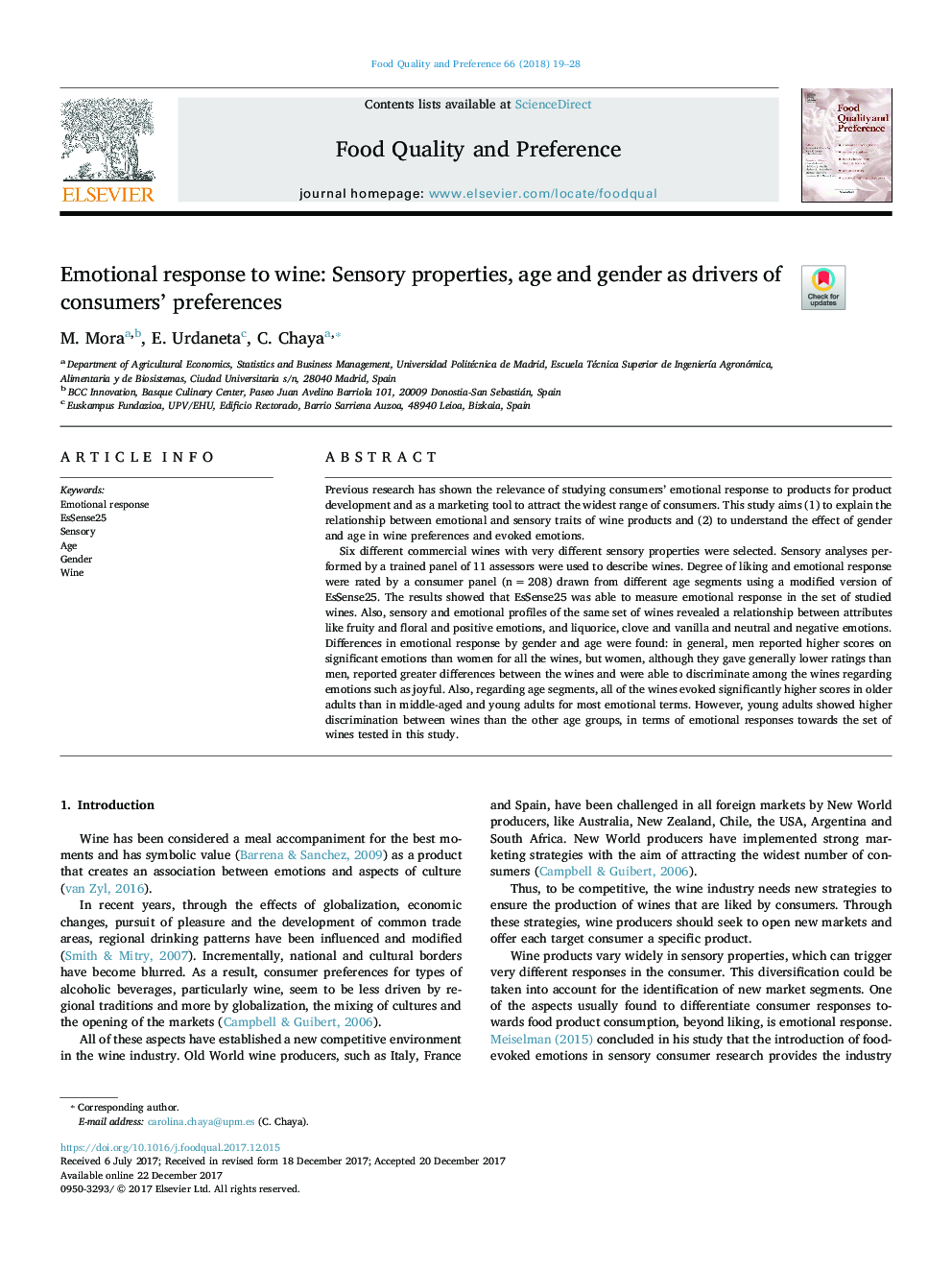| Article ID | Journal | Published Year | Pages | File Type |
|---|---|---|---|---|
| 8838511 | Food Quality and Preference | 2018 | 10 Pages |
Abstract
Six different commercial wines with very different sensory properties were selected. Sensory analyses performed by a trained panel of 11 assessors were used to describe wines. Degree of liking and emotional response were rated by a consumer panel (nâ¯=â¯208) drawn from different age segments using a modified version of EsSense25. The results showed that EsSense25 was able to measure emotional response in the set of studied wines. Also, sensory and emotional profiles of the same set of wines revealed a relationship between attributes like fruity and floral and positive emotions, and liquorice, clove and vanilla and neutral and negative emotions. Differences in emotional response by gender and age were found: in general, men reported higher scores on significant emotions than women for all the wines, but women, although they gave generally lower ratings than men, reported greater differences between the wines and were able to discriminate among the wines regarding emotions such as joyful. Also, regarding age segments, all of the wines evoked significantly higher scores in older adults than in middle-aged and young adults for most emotional terms. However, young adults showed higher discrimination between wines than the other age groups, in terms of emotional responses towards the set of wines tested in this study.
Related Topics
Life Sciences
Agricultural and Biological Sciences
Food Science
Authors
M. Mora, E. Urdaneta, C. Chaya,
